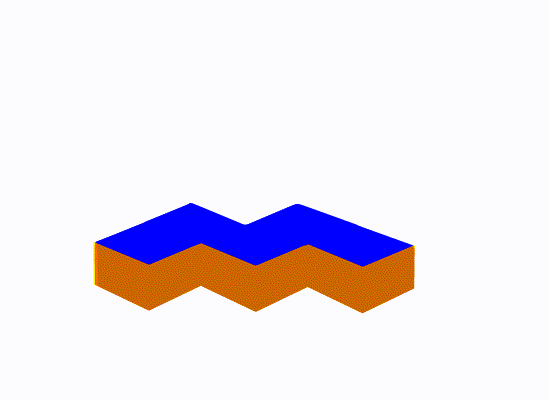cas/definition.php (people or term)

Building Blocks
Building blocks form the foundation of larger scale patterns within Complex Systems.
The nature of a building block varies according to the system: it may take the form of an ant, a cell, a neuron or a building.
Building blocks can take on many different shapes and conditions. This could be quite literally a block or could be a cell, insect, word, etc.. Analyzing building blocks is a great way to begin to understand the system. Furthermore, this method offers a platform to begin to comprehend other elements of the complex system from a new perspective. That new perspective can shine a light on how the system functions and evolves.
Identifying the building blocks of the system can aid in revealing patterns and emergence. This is important because we can then attempt to predict the outcome of certain systems. Most often what emerges is a network created by the building blocks that gives affordance to the agents within the system to function in a unique order that then resculpts the landscape and changes the behavior of the agent.
Using the building blocks as the groundwork of the system can reveal patterns. We can use these patterns to predict how the system will evolve over time. Identifying patterns is extremely helpful because this information can be used to improve the system.
Example:
If we were to examine a complex adaptive system like a city, the building blocks of the city would be buildings, plots, and routes. Together they create a unique language that is different for every city and results in cityscapes that are unparalleled to any other. These common elements are the infrastructure of the system that allows for evolving patterns to emerge and take shape of the city. In the case of this example, a consistent pattern that always emerges is that the buildings plug into plots, the plots plug into routes, and the routes come together to form a single system. This system works as a set of rules and creates a systemic order. This order can then be followed throughout the system to investigate and predict its evolution.
Darling, Marilyn J. “How Complex Systems Learn and Adapt.” 2018.
http://www.4qpartners.com/assets/how-complex-systems-learn-and-adapt.pdf
Text adapted from a contribution by Kevin Tokarczyk, Iowa State University, 2021
Cite this page:
Wohl, S. (2022, 19 May). Building Blocks. Retrieved from https://kapalicarsi.wittmeyer.io/definition/building-blocks
Building Blocks was updated May 19th, 2022.
Nothing over here yet
Navigating Complexity © 2015-2025 Sharon Wohl, all rights reserved. Developed by Sean Wittmeyer
Sign In (SSO) | Sign In
Related (this page): Urban Modeling (11), Urban Informalities (16), Rules (213),
Section: terms
Non-Linearity Related (same section): Related (all): Urban Modeling (11, fields), Resilient Urbanism (14, fields), Relational Geography (19, fields), Landscape Urbanism (15, fields), Evolutionary Geography (12, fields), Communicative Planning (18, fields), Assemblage Geography (20, fields), Tipping Points (218, concepts), Path Dependency (93, concepts), Far From Equilibrium (212, concepts),
Nested Orders Related (same section): Related (all): Urban Modeling (11, fields), Urban Informalities (16, fields), Resilient Urbanism (14, fields), Self-Organized Criticality (64, concepts), Scale-Free (217, concepts), Power Laws (66, concepts),
Emergence Related (same section): Related (all): Urban Modeling (11, fields), Urban Informalities (16, fields), Urban Datascapes (28, fields), Incremental Urbanism (13, fields), Evolutionary Geography (12, fields), Communicative Planning (18, fields), Assemblage Geography (20, fields), Self-Organization (214, concepts), Fitness (59, concepts), Attractor States (72, concepts),
Driving Flows Related (same section): Related (all): Urban Datascapes (28, fields), Tactical Urbanism (17, fields), Relational Geography (19, fields), Parametric Urbanism (10, fields), Landscape Urbanism (15, fields), Evolutionary Geography (12, fields), Communicative Planning (18, fields), Assemblage Geography (20, fields), Open / Dissipative (84, concepts), Networks (75, concepts), Information (73, concepts),
Bottom-up Agents Related (same section): Related (all): Urban Modeling (11, fields), Urban Informalities (16, fields), Resilient Urbanism (14, fields), Parametric Urbanism (10, fields), Incremental Urbanism (13, fields), Evolutionary Geography (12, fields), Communicative Planning (18, fields), Rules (213, concepts), Iterations (56, concepts),
Adaptive Capacity Related (same section): Related (all): Urban Modeling (11, fields), Urban Informalities (16, fields), Tactical Urbanism (17, fields), Parametric Urbanism (10, fields), Landscape Urbanism (15, fields), Incremental Urbanism (13, fields), Evolutionary Geography (12, fields), Feedback (88, concepts), Degrees of Freedom (78, concepts),
